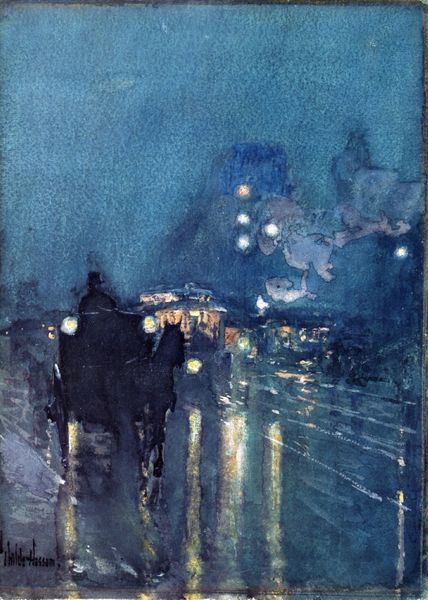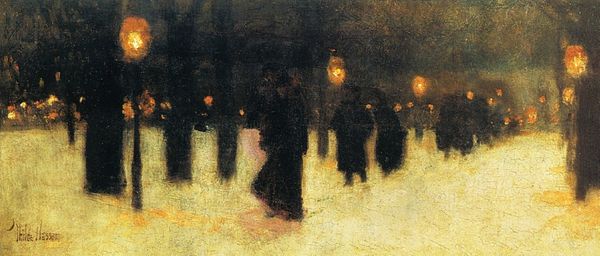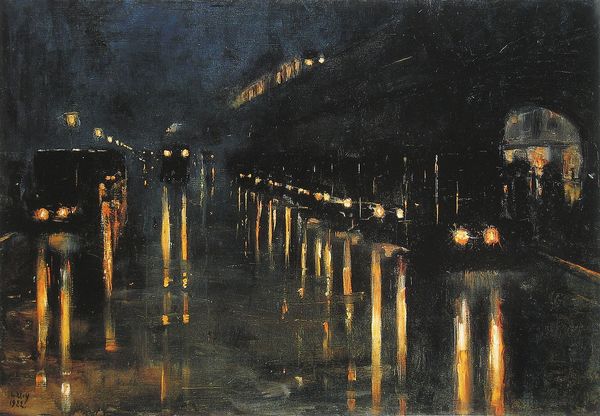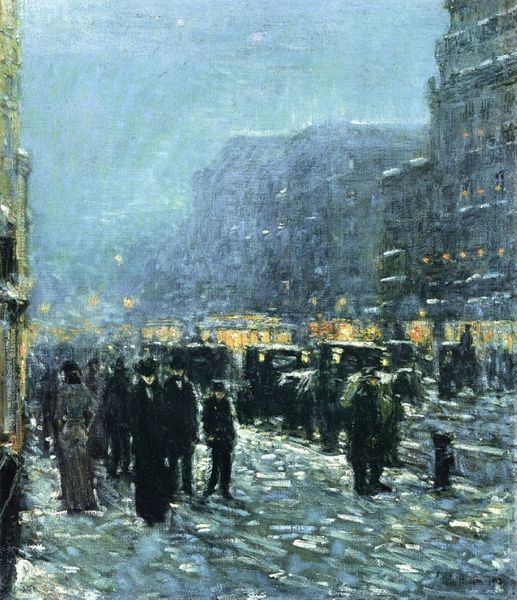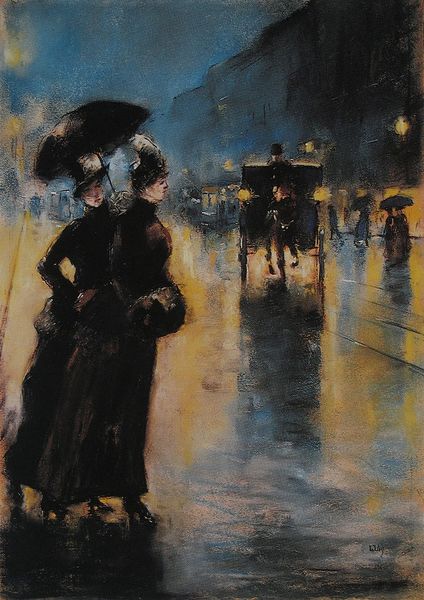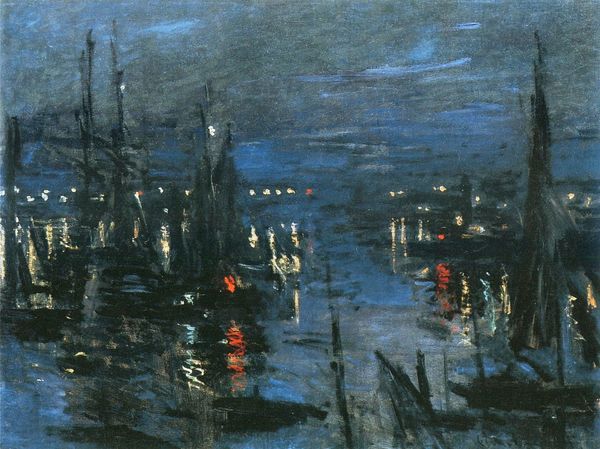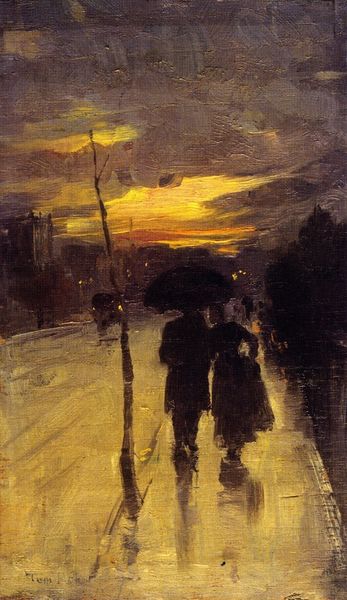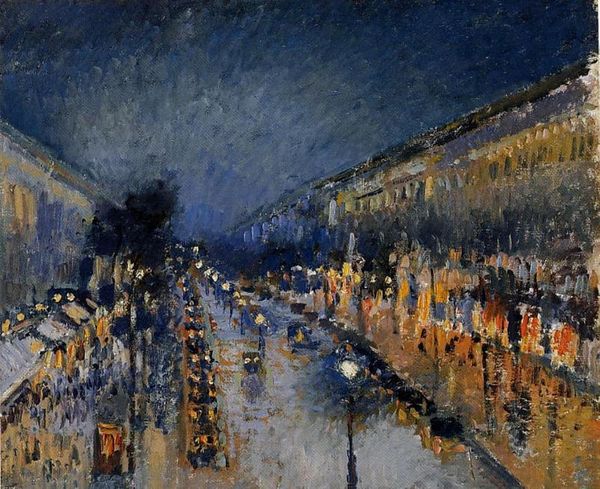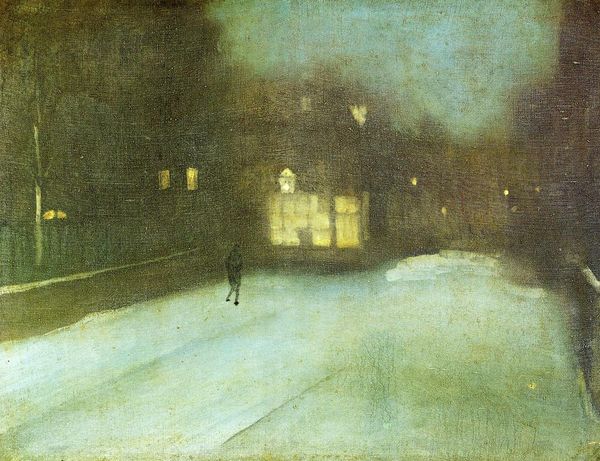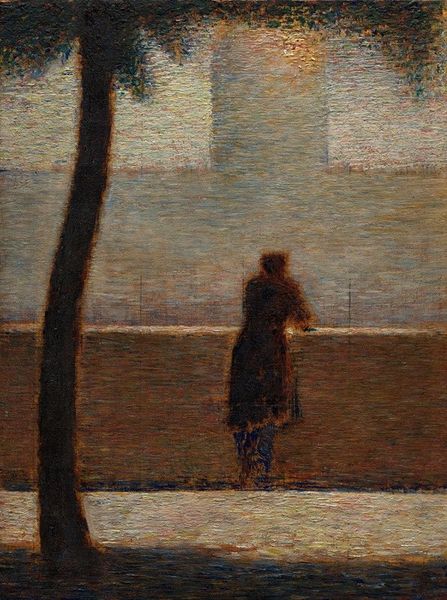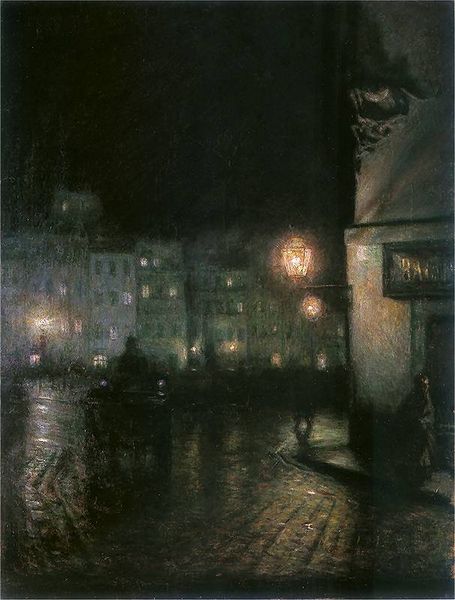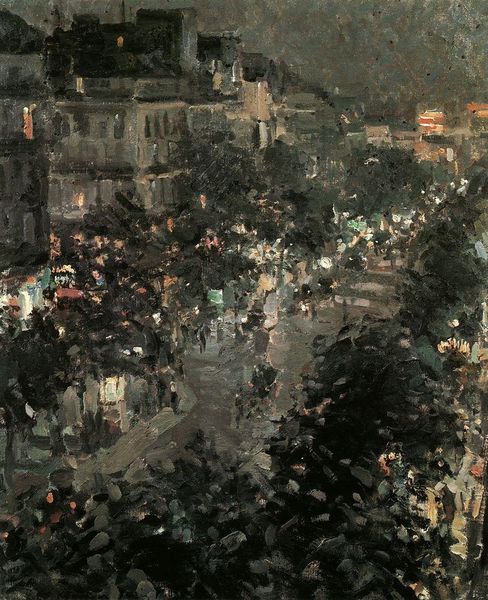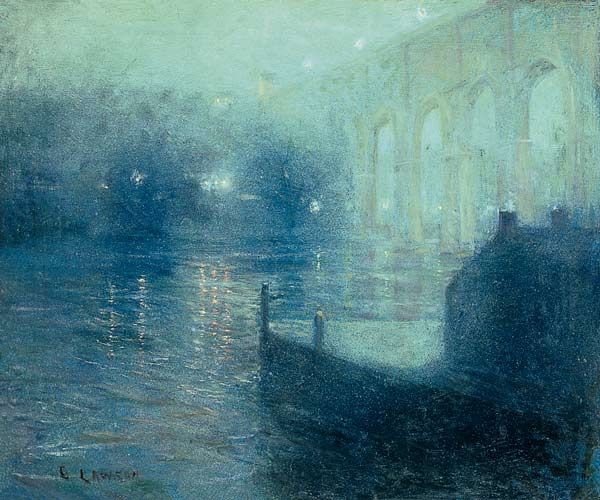
Copyright: Public Domain: Artvee
Curator: Immediately, I'm struck by the painting's overwhelming sense of stillness, a muted palette dominating the composition. Editor: Indeed. We are looking at "Fifth Avenue Nocturne," an oil on canvas created around 1895 by Childe Hassam. This piece is a wonderful example of American Impressionism. Curator: The application of paint, in short, choppy strokes, is crucial here. The city lights in the distance are impressionistically evoked, less concrete illumination and more diffused, hazy ambiance. What a striking portrayal of urban alienation. Editor: I find it fascinating how Hassam transforms the realities of late 19th-century urban life into something almost ethereal. It also speaks to how quickly the industrial revolution and electrification was changing what daily labor entailed. Curator: Precisely. The materiality is quite evident, given the dense texture of the paint surface, but I also note the subtle composition, which draws the viewer into this deep perspective of Fifth Avenue in New York City. It almost creates the sensation of being surrounded by an industrial watercolor of murky shades. Editor: The muted blues and grays, achieved through layering and scumbling, certainly contribute to the painting's subdued tone, don't they? Hassam really captures that liminal moment where day transitions into night. You can almost smell the wet asphalt. This painting becomes more than just representation, and offers us access to the emotional and material texture of city life at this turning point of history. Curator: I appreciate how you pointed out the relationship between materiality and the painting's evocation of a particular experience. A close analysis allows us to appreciate not just the form but also its impact. Editor: Yes, that deep dive into production gives insights that pure visual inspection may overlook. Curator: Very insightful; thank you for shedding a fresh perspective. Editor: My pleasure; this piece truly exemplifies the synthesis of form, material, and experience.
Comments
No comments
Be the first to comment and join the conversation on the ultimate creative platform.

